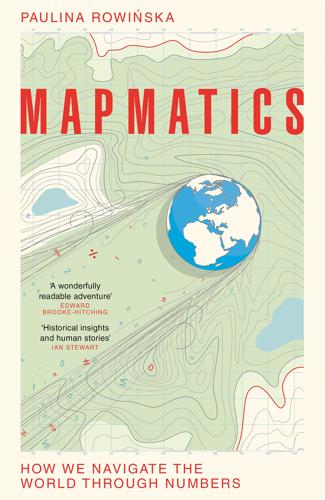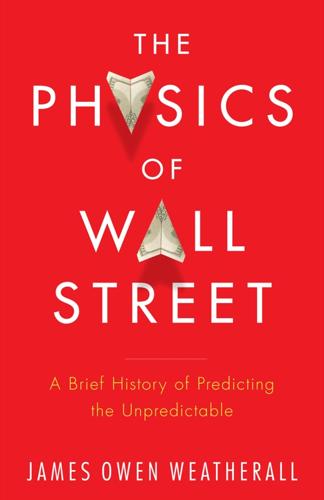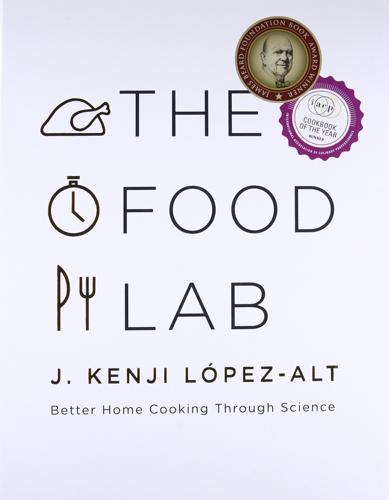
Mapmatics: How We Navigate the World Through Numbers
by
Paulina Rowinska
Published 5 Jun 2024
This time, the court stood for Norway, encouraging other coastal nations to follow suit and fight for their territory. The coastline paradox is not just a mathematical curiosity but has a tangible impact on international law. As Stoa tells me, ‘Many times, policymakers or negotiators come across the coastline paradox and understand the problem without actually naming it as the coastline paradox or understanding that it is the coastline paradox.’ In other words, people intuitively recognize the ambiguities of the simple word ‘coastline’, without being familiar with fractals and dimensions. Mathematics impacts our life whether we’re aware of it or not. The legal implications of the coastline paradox aren’t all happening on an international level.
…
Years before Mandelbrot, Steinhaus had already noticed the coastline paradox when measuring the length of the largest Polish river, the Vistula. In his 1954 publication, Steinhaus noticed that ‘the left bank of the Vistula, when measured with increased precision, would furnish lengths ten, a hundred or even a thousand times as great as the length read off the school map’. No wonder that when Steinhaus saw his own insights, also completely ignored by the mathematical community, in Mandelbrot’s paper, he promptly recommended that the paper should be published. He must have seen it as a chance for the coastline paradox, known from ancient times and noticed by multiple prominent mathematicians, to make it into mainstream research.
…
In total, the tribunal formulated seven questions that needed answering, including where the border began, how it should be measured, and which mountains the Treaty was talking about.* The coastline paradox caused a major boundary dispute that, as some scholars claim, led to anti-British feelings among Canadians, which contributed to their campaign for more autonomy from the Crown. Geopolitics was the last place where I expected to find maths – and I was wrong. Measure and rule It is late evening in Warsaw when Ryan Stoa, a law professor, connects from his new home in Louisiana to join me on a Zoom call. After reading his paper on the legal implications of the coastline paradox, I knew I had to talk to him. The Alaskan boundary dispute, it became clear, is just the tip of the iceberg.

New Dark Age: Technology and the End of the Future
by
James Bridle
Published 18 Jun 2018
The reason, as he came to understand, was that the length of the border depended upon the tools used to measure it: as these became more accurate, the length actually increased, as smaller and smaller variations in the line were taken into account.41 Coastlines were even worse, leading to the realisation that it is in fact impossible to give a completely accurate account of the length of a nation’s borders. This ‘coastline paradox’ came to be known as the Richardson effect, and formed the basis for Benoît Mandelbrot’s work on fractals. It demonstrates, with radical clarity, the counterintuitive premise of the new dark age: the more obsessively we attempt to compute the world, the more unknowably complex it appears. 3 Climate There was a video on YouTube that I watched over and over again, until it got taken down.

Ways of Being: Beyond Human Intelligence
by
James Bridle
Published 6 Apr 2022
Stoinski, ‘Caring for Infants is Associated with Increased Reproductive Success For Male Mountain Gorillas’, Scientific Reports, 8(15223), 15 October 2018. 24. Y. Fernández-Jalvo, J. Carlos Díez, I. Cáceres and J. Russell, ‘Human Cannibalism in the Early Pleistocene of Europe (Gran Dolina, Sierra de Atapuerca, Burgos, Spain)’, Journal of Human Evolution, 37(3–4), September 1999, pp. 591–622. 25. Richardson explicitly discusses the coastline paradox in Lewis F. Richardson, ‘The Problem of Contiguity: An Appendix to Statistics of Deadly Quarrels’, General Systems: Yearbook of the Society for the Advancement of General Systems Theory, 6(139), 1961, pp. 139–87. 26. Mandelbrot built directly on Richardson’s work, inspired by his work on coastlines.
…
In order to prove his hypothesis he needed accurate figures for the lengths of those borders, but found that such figures did not exist: no estimate of any one country’s border seemed to match any other. The deeper he dug into the problem, the more elusive, and the more conflicted, such estimates seemed to be. He subsequently identified a paradox: the more accurately you try to measure some things, the more complex they become. This surprising observation has become known as the Richardson effect. Imagine taking a kilometre-long ruler and measuring the coast of Britain. Now repeat the exercise with a ruler half as long, then half as long again, and so on. On each measurement, the reading would get more accurate, with more and more of the coastline accounted for. But the result, as Richardson realized, was not that the measurement converged on the correct answer but rather, the more closely it was measured, the longer it got.
…
But the result, as Richardson realized, was not that the measurement converged on the correct answer but rather, the more closely it was measured, the longer it got. What Richardson had discovered was what the mathematician Benoit Mandelbrot would later term ‘fractals’: structures which repeat to infinite complexity. Instead of resolving into order and clarity, ever-closer examination reveals only more, and more splendid, detail and variation.26 The Richardson effect applies to biology, archaeology, evolution and, it seems, to life itself. As our archaeological and biological tools get better, as we unravel the web of life, the result is not an ordered tree, with measurable branches and clear delineations between forms and types, but a whirling dance of encounters and interrelationships.

The Physics of Wall Street: A Brief History of Predicting the Unpredictable
by
James Owen Weatherall
Published 2 Jan 2013
And once again, the Mandelbrots were forced to flee. How long is Britain’s coastline? This might seem like a simple question — one that could be easily settled, say, by a team of competent surveyors. As it turns out, however, the question is more complicated than it appears. There’s a deep puzzle built into it, sometimes known as the coastline paradox. To figure out the length of a coastline, you need to take some measurements, presumably with some sort of ruler. The puzzle concerns how long your ruler needs to be. Suppose you started with a single enormous ruler that stretched from Cape Wrath, at the northernmost tip of Scotland, all the way down to Penzance, at the southwestern tip of Cornwall.
…
But with a coastline, no matter how precise your measuring device — that is, no matter how small your ruler — your measurement is always much too small. In some sense, a coastline doesn’t have a length, or at least not in the way that simple shapes like a line or a circle do. Mandelbrot addressed the coastline paradox in a groundbreaking paper in 1967. It was one of his first attempts to describe a fractal shape — as, indeed, a coastline turns out to be, though Mandelbrot didn’t coin the term until 1975. Coastlines (and other fractals) are remarkable from a mathematical point of view because they have a property called self-similarity.
…
In fact, the distributions that Pareto discovered, called Paretian distributions, are a type of fat-tailed distribution — revealing a kind of wild randomness in income distribution, though not quite as wild as the drunken firing squad’s shots. When Mandelbrot was looking at the data for IBM, he had not yet invented fractals. His seminal work on the coastline paradox was almost a decade away. But similarly to Pareto half a century before him, something about the pattern struck Mandelbrot. It reminded him of his doctoral work on Zipf, who also had discovered an odd self-similarity in how word frequencies were distributed. Although Mandelbrot had largely left academia, his work for IBM on wealth distribution was of some interest to mainstream economists, and so he was occasionally invited to give scholarly talks.

Scale: The Universal Laws of Growth, Innovation, Sustainability, and the Pace of Life in Organisms, Cities, Economies, and Companies
by
Geoffrey West
Published 15 May 2017
See science of cities social connectivity in, 340–45 as social incubators, 295–304 socioeconomic diversity and business activity, 363–71, 367 structure of movement in, 346–52 walking pace in, 335–36 water supply, 360–63 wealth, innovation, crime, and resilience, 355–59 Zipf and word use, 309–15 city rankings, 352–53, 355–59 Clausius, Rudolf, 14 Clifton Suspension Bridge, 61, 64, 65 climate change. See global warming Clinton, Bill, 82 cliques, 298, 305 closed systems, 236 Club of Rome, 231, 239, 416–17 coastline paradox, 136–40, 138, 152 Coleridge, Samuel Taylor, 361–62 commuting time, 332–35 companies, 379–410 as biological organisms, 10–12, 247–53 cities compared with, 6–7, 407–10 definition of, 379 financial characteristics of, 387–89, 388 frequency distribution of, 310, 312, 379, 381–82 income and assets of, 2, 2n, 4, 32 myth of open-ended growth, 391–93 network-based theory of, 407–8 scaling exponent of, 32–33, 385–92, 408 science of.
…
GDP, 210 Malthus and neo-Malthusians, 227–30, 414–15 rise of the industrial city, 222–26 urbanization and global sustainability, 28–32, 213–15, 411–26 wheat and chessboard problem, 218–20 exponential scaling of temperature, 173–78 exposure time, 334 extension of life span, 6, 183–94, 203–7 body temperature and, 203–4 caloric restriction and, 205–7, 206 heartbeats and pace of life, 204–5 Facebook, 296, 332, 340, 447 factory farming, 230 falling bodies, 36–37, 48 Farmer, Doyne, 382, 404–5 fat-tail distributions, 314–15 federal budget, U.S., 233–34 Ferdowsi, 218–19 fertility rate, 229 Feynman, Richard, 72 financial crisis of 2008, 24 financial markets, 142, 144, 389–90 finite time, 423 finite-time singularity, 31, 413–17, 414, 447 fire, 236 “first order,” 109–10 fitness (biology), 115 Flint, Michigan, water supply, 360 Florida, Richard, 262 fluid dynamics, 71–72 food calories a day, 13, 90, 234, 373 food productivity, 229–30 Forrester, Jay, 231–32 fossil fuels, 178, 221–22, 236–38, 240, 241–42 Foster, Norman, 258, 299 Foster, Richard, 404–5 fourth dimension of life, 151–54 Fourth Paradigm: Data-Intensive Scientific Discovery, The (Hey, ed.), 443 fractal dimension, 130, 138, 140–45 of cities, 290–95 of EKG, 142–43, 144 of stock market, 142, 144 Fractal Geometry of Nature, The (Mandelbrot), 143–44 fractals, 27, 92, 130–45, 315–16 characteristics of, 126–28, 127 coastline paradox, 136–40, 138, 152 Mandelbrot and, 138–45, 152 Richardson and, 131–42, 152 freedom of choice, 56–57 free market economy, 229, 232, 233, 238, 380 free radicals, 200 free will, 56–57 frequency distributions of companies, 310, 312, 379, 381–82 of personal incomes, 312–13, 379 of wars, 134 of words in English language, 311 friendships, 304–9 Froude, William, 71–75 Froude number, 72–75, 76–77 Fukushima earthquake of 2011, 46, 47, 243–44 Future Cities Lab, 352 Galileo affair, 37–38 Galileo Galilei, 36–42, 37, 45, 48, 50–60, 97–98, 158, 352–53 Gandhi, Mahatma, 286 garden cities, 254–56, 256, 263–65 Gaudí, Antoni, 259 Gauguin, Paul, 189 Gaussian distribution, 56, 313–15 GDP (gross domestic product) city rankings and, 358 France, 277 scaling cities and, 275, 280 U.S., 17–18, 210, 355 Geanakoplos, John, 382 Gehry, Frank, 259 Gell-Mann, Murray, 435 general relativity, 339, 422, 428, 429 genes (genetics), 79–80, 84–85 genomics, 80, 97 geometry of urban systems, 288–90 George Mason University, 382 George Westinghouse Company, 123–24 geriatric survivors, 403, 405–6, 406 Gillooly, Jamie, 174 Glaeser, Edward, 213, 262 global population explosion, 209–13, 210 global sustainability, 28–32, 213–15, 411–26 global warming, 173, 177–78, 215, 233, 237–38 Godzilla, 36, 39, 158, 160–62, 163 Godzilla (film), 36 Goethe, Johann Wolfgang von, 328–29 Goff, Bruce, 259 Golden Gate Bridge, 61, 62 Google, 32, 184, 361, 403–4 Grand Canyon, 127, 137 Grand Unified Theory (GUT), 82–83, 427–30 grand unified theory of complexity, 430–31 grand unified theory of sustainability, 411–26, 431 gravity, 48, 76–77 gravity waves, 77 Gray, Jim, 443 Great Britain (ship), 67 Great Eastern (ship), 65, 67–71, 73, 74, 300 Great Western (ship), 67 Great Western Railway, 64–66 Great Western Steamship Company, 66–68 greed, and social networks, 286–88 greenhouse effect, 178, 237, 243 Greenwich Village (New York City), 260, 261 group identity and cohesiveness, 305–9 growth, 163–73 bounded, 31, 173, 391 innovation and limits of, 59–63 metabolism of cities and, 371–78 open-ended.

The Food Lab: Better Home Cooking Through Science
by
J. Kenji López-Alt
Published 20 Sep 2015
When you look at a coastline from far away and measure it, you’ll measure a certain perimeter. As you zoom closer and closer, you realize there are tiny inlets or curves in the beach that weren’t visible from far away. When measured again, these bumps add length to the total perimeter. This is a phenomenon known as the Richardson Effect, which basically says that the more precisely you measure a coastline, the longer the measurement gets. And the more bumpy or irregular the surface is, the more pronounced the effect. Well, the same applies to breaded foods. Though a nonbreaded chicken cutlet and a breaded chicken cutlet have essentially the same mass and volume, because of the irregular edges of the breaded cutlet, it actually has far greater surface area than the nude chicken.
…
See Endive (Belgian) Bench scraper, 65 Bibb lettuce, about, 767 Biscuits Bacon Parmesan, 163 buttermilk, best methods for, 158–62, 160–62 Buttermilk, Super-Flaky, 163 Cheddar Cheese and Scallion, 158, 160–62, 163 Cream, Easy, 165 Blender, immersion about, 62 pureeing soups with, 203 Blender, stand about, 64 pureeing soups with, 203, 205 Blueberry Pancakes, 150 Blue Cheese Butter Seasoning, 326 Dressing, Three-Ingredient, 832, 832 Mixed Bitter Lettuces, Pomegranate, and Hazelnut Vinaigrette, Roasted Pear Salad with, 793, 793 Boiling water under cover, experiment on, 242 at high altitude, 98–99 myths about, 99 science of, 96–97, 675 Bok Choy cooking techniques, 407 micro-steaming, 423 Bolognese Sauce, Fresh Pasta with, 732, 732 Sauce, The Ultimate, 729, 729–31, 731 Traditional Lasagna, 735, 735–36, 736 Bottles, squeeze, 72 Bowls, prep, 66 Braising description of, 239 with lid on versus lid ajar, 272–73 science of, 272–73 temperature versus time experiments, 272–73 Brandy(ied) Cherries, Pan-Seared Pork Chops with, 352, 355 -Cream Pan Sauce, 370 Bratwurst Cooler-Cooked Brats and Beer, 398 Grilled or Pan-Roasted, with Beer, Mustard, and Sauerkraut, 520 -Style Sausage, Seasoning Mix for, 505 Bread Crumbs coating foods in, for deep-frying, 864, 878–79, 879 Garlic-Anchovy, 459 for meat loaf recipes, 528–29 Parmesan, Broiled Asparagus with, 457, 457 and the Richardson Effect, 882 Breadings and batters, for deep-frying, 863–64 Breads. See also Pancake(s) Bacon Parmesan Biscuits, 163 Basic Quick Waffles, 157 best, for stuffings, 620 buttermilk biscuits, best methods for, 158–62, 160–62 Cheddar Cheese and Scallion Biscuits, 158, 160–62, 163 Cream Scones, 165 drying, description of, 621 Easy Cream Biscuits, 165 Easy Grilled Naan-Style Flatbread, 517, 517–18 Even Easier Grilled Flatbread, 518, 518–19 Flaky Scones, 164 frozen, reheating, 622 Garlic, The Best, 748, 748 Maple Bacon Waffles, 157 Orange-Scented Waffles, 157 Parmesan Croutons, 824 quick, definition of, 143 quick, working with batters, 144–45 staling, description of, 621 sticky buns, best methods for, 166–67 storing, 76, 621–22 Super-Flaky Buttermilk Biscuits, 163 waffles, best cooking methods, 156 The World’s Most Awesome Sticky Buns, 166, 167–71, 168–69, 171 yeasted, science of, 142–43 Bread stuffing best breads for, 620 Classic Sage and Sausage Stuffing, 620, 622 sage and sausage, best methods for, 620–21, 621 Breakfast Sausage, Maple-Sage, 507, 507 Brie cheese, flavor of, and best uses for, 718–19 Brining basics of, 575–76 experiments, 575–76 in flavorful solutions, 576–78 poultry, 574–79 problems with, 576 Broccoli buying, 215–16 and Cauliflower, Stovetop Mac ’n’ Cheese with, 723 cooking techniques, 407 cutting up, 216, 216 Garlicky, Anchovies, and Bacon, Pasta with, 685 micro-steaming, 423 or Cauliflower Casserole, Cheesy, 420, 420–21 -Parmesan Soup, Creamy, 213, 213–14 preparing, for chopped salads, 835 preparing, for soups, 190 preparing, for tempura, 903 Roasted, with Garlic-Anchovy Bread Crumbs, 458–59, 459 storing, 216 Broccoli Rabe cooking techniques, 407 micro-steaming, 423 Red-Sauce-Braised, and Sausage, Pasta with, 696, 697 Broth beef, store-bought, about, 194 shopping for, 194 USDA labeling laws, 186 Brussels Sprout(s) best searing methods, 430–31 cooking techniques, 407 Leaves and Chorizo, Almost-No-Stir Risotto with, 755 micro-steaming, 423 preparing, 432, 432 preparing, for soups, 190 Seared, with Bacon, 433, 433 and Shallots, Roasted, 458, 458 shredding and charring, 431 Buns choosing, for burgers, 547–48 sticky, best ways to prepare, 166–67 Sticky, The World’s Most Awesome, 166, 167–71, 168–69, 171 Burgers best cooking methods, 548, 548 choosing buns for, 547–48 Classic Diner-Style Smashed Cheeseburgers, 552, 552–53 cooking experiments, 184 deep-frying, after cooking sous-vide, 400–401 five rules for, 545–48 flipping, opinions on, 557 grilling, 32 hamburger, defined, 485 internal cooking temperatures, 548 pan-searing, after cooking sous-vide, 400–401 pub-style, best grilling methods, 554–57, 555, 556, 557 Pub-Style Thick and Juicy Cheeseburgers, 558–59, 559 salting, 546, 546–47, 547 smashing, four rules for, 551, 551–52 smashing (versus smashed), 549, 549–52, 551 smash time versus final weight, 551 Sous-Vide Cheeseburgers, 401 working meat for, 545, 545–46 Butter -and-flour roux, adding liquid to, 743, 743 butterfat content, 109, 109 clarified, about, 110 Foolproof Hollandaise Sauce, 107, 108, 111 milk proteins in, 109, 110 smoke point, 861 storing in refrigerator, 76 volume and weight conversions, 9 water content, 109, 109–10 Butter (Boston) lettuce, about, 767 Buttermilk biscuits, best methods for, 158–62, 160–62 Biscuits, Super-Flaky, 163 defined, 148 Easy Homemade Crème Fraîche, 123, 123 for homemade ricotta, 151–52 leavening properties, 143 pancakes, cooking experiments, 143–44, 144 pancakes, flavoring, 146 Pancakes, Light and Fluffy, 142, 150, 150 pancakes, science of, 142–46, 144 Ranch Dressing, 843 substitutes for, 148 Three-Ingredient Blue Cheese Dressing, 832, 832 volume and weight conversions, 9 Butters, Compound about, 325, 325 Blue-Cheese Butter Seasoning, 326 Garlic-Chile Butter Seasoning, 326 Lemon-Parsley Butter Seasoning, 326 Master Recipe for, 326 Cabbage.
…
See Prime Rib Rice. See also Risotto Arborio, about, 750, 751 Bomba, about, 750, 750 Carnaroli, about, 751 fino, or superfino, about, 751 (or Noodles), The Ultimate Chicken Vegetable Soup with, 188, 191 starch molecules in, 750, 753 storing, 79 Vailone Nano, about, 750, 751 Rice cooker, 64–65 Richardson Effect, 882 Ricotta acidic ingredients for, 151–52 best milk for, 153 Classic Baked Ziti, 746, 746, 747 draining, 152 Fresh, in 5 Minutes or Less, 151, 154 homemade, flavor and texture, 151 how it is made, 151 mass-market, texture of, 151 Pancakes, Lemon, 155, 155 Warm, with Olive Oil and Lemon Zest, 154 Risotto adding broth to, 751 Almost-No-Stir, Basic, 749, 754 Almost-No-Stir, with Cherry Tomatoes and Feta, 755 Almost-No-Stir, with Chorizo and Brussels Sprout Leaves, 755 best cooking methods, 749–54 best rice for, 750–51 butter and olive oil for, 752 clumpy, appearance of, 750 Green, with Mushrooms, 758, 758–59 reserving rice starch for, 753, 753 Spring Vegetable, 755, 755–57 stirring, 751–52 toasting rice for, 752–53, 753 Romaine lettuce, about, 766 Roquefort Chopped Ranch Cobb Salad, 841–42 flavor of, and best uses for, 720–21 Rosemary Garlic, and Anchovies, Slow-Roasted Boneless Leg of Lamb with, 646 and Lemon Zest, Quick Creamy Pasta with, 713 Rösti Basic Crisp Potato Cake, 135 best cooking methods, 134–35 Crispy Potato, Onion, and Mushroom Cake, 134, 136 Roux, adding liquid to, 743, 743 Rutabaga Glazed, 453 preparing, for soups, 190 Safflower oil, smoke point of, 861 Sage -Maple Breakfast Sausage, 507, 507 and sausage stuffing, best methods for, 620–21, 621 and Sausage Stuffing, Classic, 620, 622 Salads Arugula and Pear, with Parmigiano-Reggiano and Balsamic-Soy Vinaigrette, 789, 789–90 Asparagus, with Toasted Almonds and Goat Cheese, 782, 782 basic rules for, 765–66 Caesar, 823, 823 chopped, best ways to prepare, 833, 833–36 chopped, ingredients for, 834–36 Chopped Antipasti, Restaurant-Style, 840, 840–41 Chopped Greek, 836–37, 837 Chopped Ranch Cobb, 841–42 Creamy Coleslaw, 822, 822 Egg, The Best, 821, 821 Fingerling Potato, with Creamy Vinaigrette, 787, 787–88 Flank Steak, Spicy Thai-Style, 344, 344 Green Bean, with Red Onion and Hazelnut Vinaigrette, 792 Iceberg Wedge, 831, 831 Kale Caesar, 828, 828–29 loosely defined, 765 marinated kale, best ways to prepare, 825–26 Marinated Kale, with Chickpeas and Sumac Onions, 827, 827 Marinated Kale, with Shallots and Kidney Beans, 828, 828 Mexican Street Corn, 436, 436–37 Mixed Green, Basic, 782 Moroccan, Yogurt, and Mint, Grilled or Pan-Roasted Merguez with, 516, 516 potato, best ways to prepare, 812–15 Potato, Classic American, Done Right, 812, 817 properly dressing, rules for, 772, 772 Roasted Beet, with Goat Cheese, Eggs, Pomegranate, and Marcona Almond Vinaigrette, 796, 796–97 Roasted Beet and Citrus, with Pine Nut Vinaigrette, 794, 794–95 Roasted Pear, with Mixed Bitter Lettuces, Blue Cheese, Pomegranate, and Hazelnut Vinaigrette, 793, 793 Spring Vegetable, 783, 783–84 Tomato and Mozzarella, with Sharp Balsamic-Soy Vinaigrette, 790, 790–91, 791 White Bean and Manchego Cheese, 839 Winter Greens, with Walnuts, Apples, and Parmesan-Anchovy Dressing, 810, 810–11 Salad spinner, 68 Salami preparing, for chopped salads, 835 Restaurant-Style Chopped Antipasti Salad, 840, 840–41 Salmon coho, about, 379 common cooking mistakes, 371–72, 371–72 cooking temperatures and texture, 372–73 cooking with skin on, 373 Cooler-Cooked Olive Oil–Poached, 399 fillet, cross section, appearance of, 372, 372 fillets, boning, 378, 378 keeping skin intact while cooking, 373–76, 374–76 king, about, 379 obtaining perfectly crisp skin, 375–76 pale-orange-red flesh, about, 372 skin, about, 372 sockeye, about, 379 subcutaneous fat, about, 372 Ultra-Crisp-Skinned Pan-Roasted Fish Fillets, 380, 381 Salsa Classic Pico de Gallo, 351 Santa Maria–Style, 348 Verde, 396 Salsify, cooking techniques, 408 Salt added to eggs, effect of, 119, 119–20, 120 adding to burger meat, 546, 546–47, 547 adding to lamb, 643–44 adding to pasta water, 678 adding to simmering water, 99 applying to meat, science of, 497–98 dry-brining poultry with, 579–80 for marinades, 328 seasoning beef steaks with, 289–91, 290 seasoning meat loaf mix with, 529 seasoning sausage meat with, 496–97, 502 seasoning soups with, 204 solutions, versus brining, 358–60 storing, 80 types of, 81 volume and weight conversions, 9 Saltcellar, 65–66 “Salting out,” 578 Sandwiches.

Cold: Adventures in the World's Frozen Places
by
Bill Streever
Published 21 Jul 2009
Richardson also tried to use numerical analyses to understand the causes of war and is considered the cofounder of the scientific analysis of conflict, described in part in his Arms and Insecurity and Statistics of Deadly Quarrels, neither of which is currently readily available. Separately, he showed that shoreline length is a function of scale and that shoreline length will increase as finer scales are used. This so-called Richardson effect is often ignored in technical papers attempting to relate shoreline length to various ecological phenomena and political or economic statistics. Some sources suggest that Lorenz had planned to mention a seagull’s wings rather than a butterfly’s wings. Lorenz was swayed to the butterfly by another meteorologist, Philip Merilees.